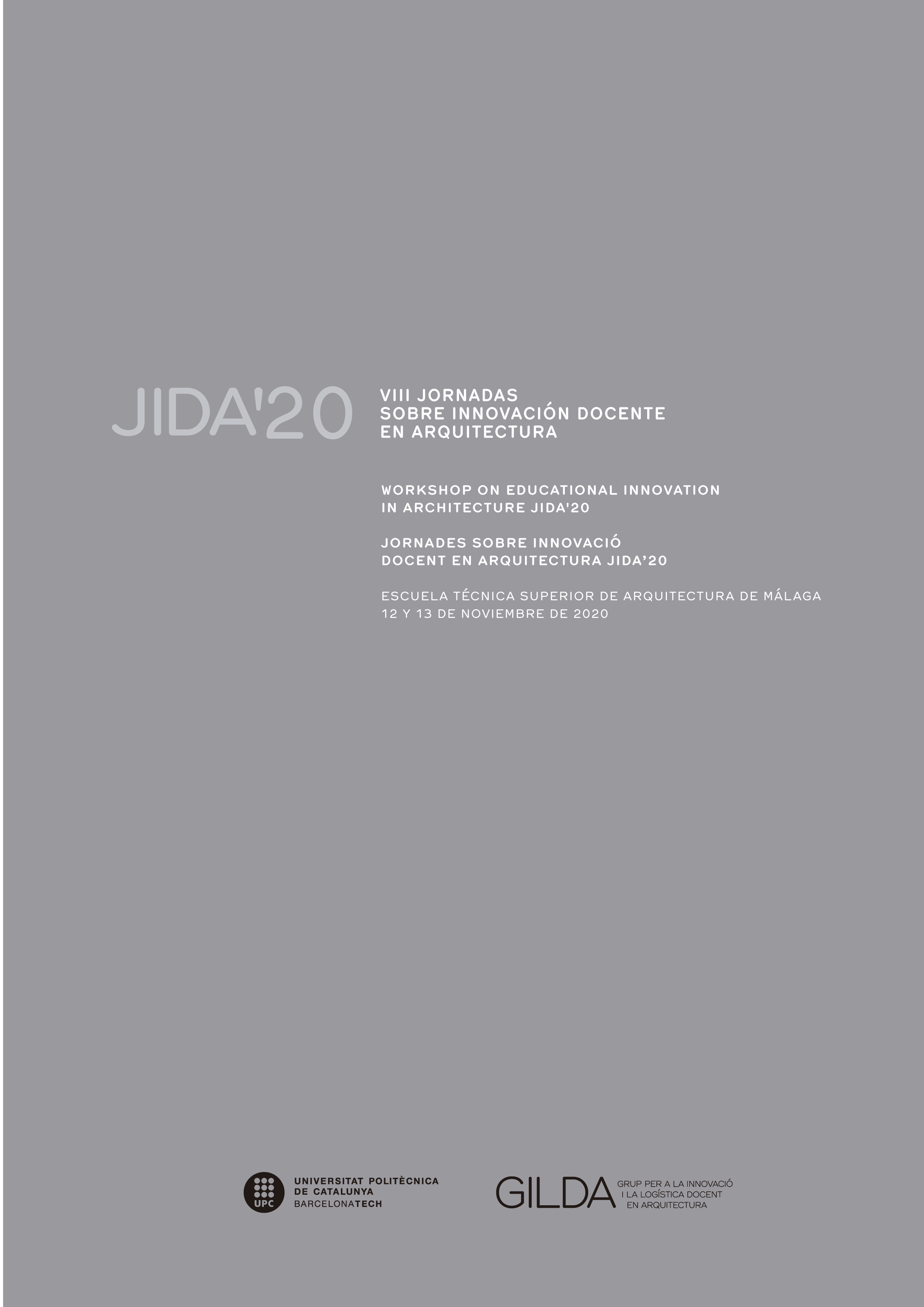From Vitruvius to Instagram: New methodologies for architectural analysis
DOI:
https://doi.org/10.5821/jida.2020.9337Abstract
Given the emergence and consolidation of diverse digital sources of architecture dissemination, this course proposes the incorporation of these to the analysis of buildings and projects. The implementation of a methodology based on the analysis of visual and textual content, collaborates in the understanding of architecture as a medial construction in which representations and interpretations directly influence how we appreciate and value the built environment. This tool is put into practice in the study of postmodern referents, in an attempt to reverse their negative reputation in comparison with the flattered works of the modern movement. The proposal consisted of a case study organized in three phases that allowed the comprehensive understanding of the buildings from a theoretical and academic point of view, as well as from the perception and experience of visitors and users who express themselves through different platforms.
References
ACKER, W. V. (2020). “Ugliness, or the cathetic moment of modulation between terror and the comic in postmodern architecture†en Architecture and Ugliness: Anti-Aesthetics and the Ugly in Postmodern Architecture. Bloomsbury Publishing: Londres
ACKER, W. V., MICAL, T. (2020). Architecture and Ugliness: Anti-Aesthetics and the Ugly in Postmodern Architecture.Bloomsbury Publishing: Londres, 257-274
BARDÃ-MILÀ, B., GARCÃA-ESCUDERO, D., SANZ, J. M. (2018). “La forma urbana como objeto pedagógico: los casos de Learning from Las Vegas y Made in Tokyoâ€. En Congreso Internacional ISUF-H: Ciudad y formas urbanas: Perspectivas transversales. Prensas Universitarias de Zaragoza. Vol. 10: 35-44.
BAYLEY, S. (2013). The ugly truth: The beauty of ugliness. Architectural Review. https://www.architectural-review.com/essays/ornament/the-ugly-truth-the-beauty-of-ugliness
COLOMINA, B. (2018). Privacidad y publicidad en la era de las redes sociales. ARQ Ediciones: Santiago de Chile
DE SOLÀ-MORALES, I. (2000). “Prólogo†en Introducción a la arquitectura: Conceptos fundamentales (1a, pp. 11-14). Edicions UPC: Barcelona
ERLL, A. (2011). Memory in culture. Palgrave Macmillan Memory Studies. Palgrave Macmillan: Basingstoke.
FOSTER, H. (1988). La Posmodernidad (1a. ed. mexicana.). KairoÌs: Barcelona
HIGGOTT, A., WRAY, T. (2016). Camera constructs: Photography, architecture and the modern city. Routledge: London.
JENCKS, C. (1981). El lenguaje de la arquitectura posmoderna. Gustavo Gili: Barcelona
LOBOS, J. (2008). El rol del arquitecto. Revista CA, 134, 42-47. http://revistaca.cl/revistas/134.pdf
MONTANER, J. (1995). DespueÌs del movimiento moderno: arquitectura de la segunda mitad del siglo XX (2a. ed.). Gustavo Gili: Barcelona.
POOL, R. (1991). “Postmodern Ethnography?†en Critique of Anthropology, 11(4), 309-331. https://doi.org/10.1177/0308275X9101100402 [Consulta: 07 de agosto del 2020]
RATTENBURY, K. (Ed.). (2002). This is not architecture: Media constructions. Routledge: New York.
ROSE, G. (2001). Visual methodologies: An introduction to the interpretation of visual materials. Sage: London.
ROTH, L. M. (1993). Entender la arquitectura: Sus elementos, historia y significados. Barcelona: Gustavo Gili.
ZAPPAVIGNA, M. (2016). “Social media photography: Construing subjectivity in Instagram images†en Visual Communication, 15(3), 271-292. https://doi.org/10.1177/1470357216643220






















